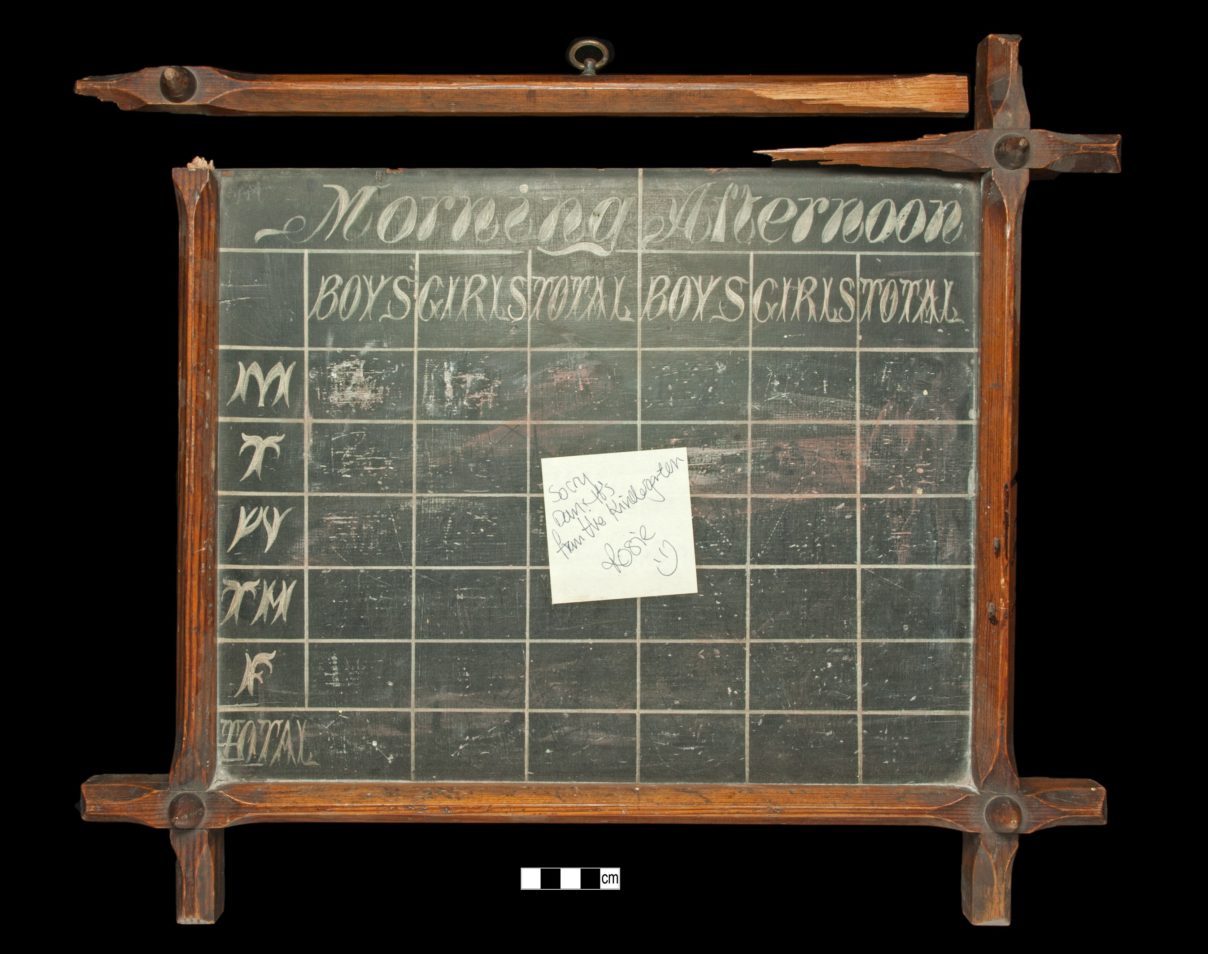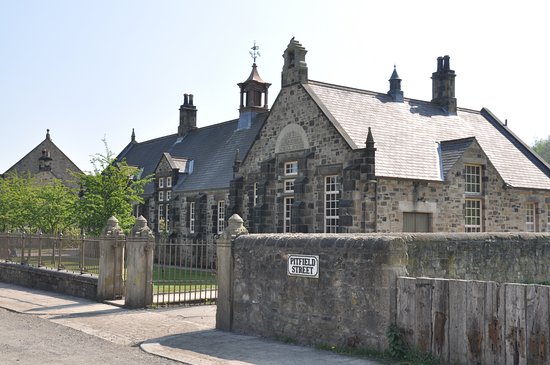Beamish Trip – Student Post

Some of the objects we are working on this summer come from Beamish, the living museum of the north. In order to get a better feel for the lives of our objects, we headed over to Beamish last Friday where we were able to experience the different types of stores and displays at the museum. As a living museum, the primary role of the objects is to educate the public. Many of the objects on display are working objects which interact directly with visitors. The blackboard I am currently conserving falls into this category.

The blackboard came into the conservation lab having been damaged in use in the kindergarten classroom. The blackboard is comprised of a wooden board coated in thick black paint fitted in a wooden frame. Painted wooden blackboards were common prior to 1920. Knowing as much, we headed over to the kindergarten classroom at Beamish to have a look around. The kindergarten classroom is located within the school at Pit Village. The 1900s Pit Village shows visitors what it was like in a colliery community during the period of peak coal production in the North East. In addition to the school, the Pit Village includes a terrace of miners’ cottages, a fish and chips shop, a band hall, a chapel, a sinkers’ bait cabin, and pit pony stables.

The school itself has three classrooms being based off the board school that operated in the East Stanley mining community from 1902 to 1985 in County Durham. The first of the classrooms is kindergarten. We had look around the room noting the types of objects on display.
In the central room, we took notice of a blackboard very similar to one being treated. The attendant helpfully explained that such a blackboard was kept in each classroom to take attendance. A comparable blackboard was also hanging in the third classroom.

We looped back around to the kindergarten classroom to take a closer look. This time an attendant was present who felt that there usually was a blackboard in the room; however, it was not currently present. It would appear we found the backboard’s usual display location and determined its use in the museum! Additionally, finding the two other comparable examples brought up another interesting question. Were the two other blackboards replicas of the original blackboard that is being treated? This seems a likely occurrence, but further research is needed to confirm this hunch. The visit to Beamish informed me about the display, use, and value of the blackboard within the museum. This insight will allow me to better fit the conservation treatment of the blackboard to its role within Beamish Museum.
Casey.
